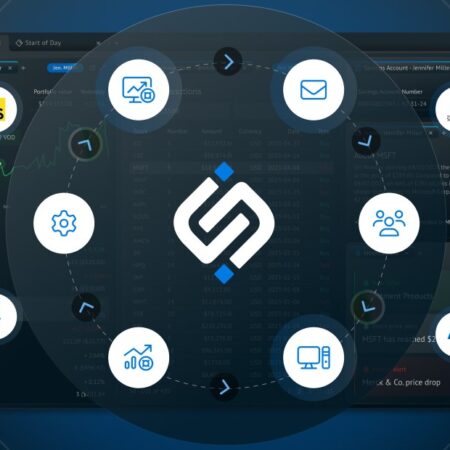The growing number of desktop applications creates an increased burden of maintenance and further complicates development processes. If you are an Architect or Engineering Manager, this probably sounds familiar. Then you will be aware that traditional enterprise integration patterns and back-end integration (e.g. ESB/BPM) solutions do little to help enterprise IT teams declutter the desktop. Low-hanging fruit is up for grabs: host your organization’s applications in a Desktop Integration Platform. DIPs comprise a set of tools that blend multiple web and desktop applications into a coherent desktop environment.
Your app teams will be the first to thank you; their users will appreciate their newly optimized workflows and operational costs will begin to decrease.
How Does the DIP work Compared to Traditional Enterprise Integration Patterns
The Desktop Integration Platform organizes and integrates multiple apps logically through a local message broker, and visually, through advanced window management shells, commonly referred to as Workspaces. Commercial vendors specialize in offering ready-to-use message brokers and window management tools to integrate both web and native applications. Additional components, including launchpads, multi-application search engines and notification panels, will help to streamline the platform experience further.
Once operational, the platform environment becomes a convenient delivery channel for the organization’s software development teams. Publishing apps into the platform puts them automatically at the users’ fingertips.
From the users’ perspective, the myriad of apps they used to switch between now appears like a single, do-it-all app with everything in one place. As the platform matures, newly produced apps become smaller, more modular, and more native to the environment.
For the IT team, a DIP represents an alternate and complementary approach to the traditional enterprise integration patterns. Unlike an Enterprise Service Bus (ESB), a DIP is designed to integrate client-side applications and orchestrate the UI rather than perform bulk data transfer etc. Better still, it also offers a robust means of managing complex and exploratory user-processes unlike a fixed-scenario bot-based approach from an RPA (Robotic Process Automation) solution.
Acquiring a Desktop Integration Platform
Historically, enterprise software teams ended up building in-house platforms, mostly by assembling components from commercial and open-source vendors. Building a platform in this manner is not rocket science but depending upon your starting point, can take many months or years.
Last Updated on August 16, 2023

